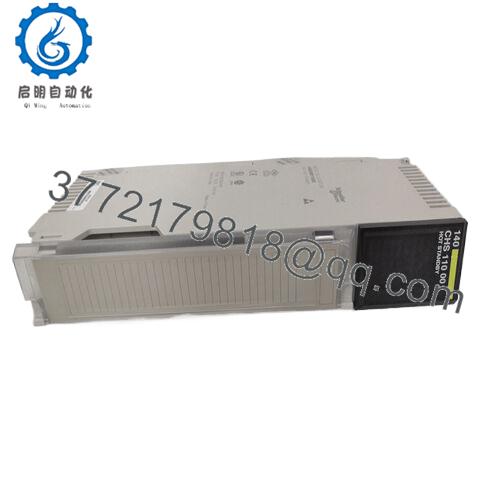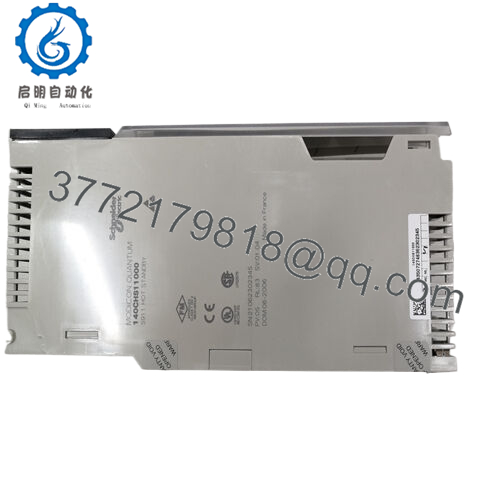Description
Real-World Use & Application Scenarios
In industrial automation and control systems, stable and reliable power supplies are essential to ensure continuous operation and protect sensitive electronics. The Schneider Electric 140CPS11100 power supply module is commonly used in manufacturing plants, process control applications, and critical automation environments where consistent power delivery directly impacts system uptime and safety. Applicable in systems based on the Modicon Quantum platform, this standalone power supply meets the rigorous demands of sectors such as automotive production, energy management, and material handling. It is designed to address challenges like fluctuating power input, surge currents during start-up, and the need for reliable power redundancy.
Product Introduction & Positioning
The Schneider Electric 140CPS11100 is a standalone power supply module tailored for the Modicon Quantum automation system. It accepts a wide input voltage range from 120 to 230 V AC and delivers a regulated 5.1 V DC output at up to 3 A. Its design focuses on providing robust and stable power for Quantum CPU and I/O modules, enhancing system reliability and operational safety.
Positioned as a fundamental component within the Quantum modular architecture, the 140CPS11100 ensures scalable and dependable power distribution. Its internal protections against overload and overvoltage guard downstream devices, while its compact form factor enables easy integration into existing control cabinets without extensive modifications.
Key Technical Features & Functional Benefits
The 140CPS11100 boasts a wide operational input range of 120 to 230 V AC, with an associated input current of 200 mA at 230 V and 400 mA at 115 V. Its design tolerates inrush currents of up to 10 A (230 V) and 20 A (115 V), accommodating power surges during system startup without risk of component damage.
Output is a stable 5.1 V DC supplying up to 3 A on a summable basis, sufficient for powering CPUs, I/O modules, and ancillary control devices. The module includes internal output overvoltage and overload protections, significantly reducing maintenance-related downtime and safeguarding system integrity.
- 140CHS11000
Efficient power dissipation is managed by the formula 2+(3×Iout) watts, which assists in maintaining favorable thermal operating conditions. A green LED provides clear local indication of power status, and an alarm output contact alerts users to fault conditions, enabling timely interventions.
Certified to meet UL, CSA, CE, FM Class 1 Division 2, and related industrial standards, the power supply module offers high reliability and compliance for a broad range of industrial automation applications.
Detailed Technical Specifications
| Parameter | Value |
|---|---|
| Model | 140CPS11100 |
| Brand | Schneider Electric |
| Product Type | Standalone Power Supply Module |
| Input Voltage | 120 to 230 V AC (100 to 276 V AC), 47 to 63 Hz |
| Input Current | 200 mA at 230 V, 400 mA at 115 V |
| Inrush Current | 10 A at 230 V, 20 A at 115 V |
| Output Voltage | 5.1 V DC |
| Output Current | 3 A (summable) |
| Output Protection | Internal overvoltage and overload |
| Power Dissipation | 2+(3×Iout) Watts |
| Alarm Output Contact | 1 NC contact rated 6 A at 220 V |
| Local Signaling | 1 Green LED (Power OK) |
| Operating Temperature | 0 to 60 °C |
| Storage Temperature | -40 to 85 °C |
| Certifications | UL 508, CSA C22.2 No 142, CE, FM Class 1 Division 2 |
Related Modules or Compatible Units
140CPU65100 – Quantum CPU module compatible with the 140CPS11100 power supply.
140ADE96010 – Analog and digital I/O modules powered by the same Quantum power supply family.
140CRA35201 – Communication adapter for linking Quantum controllers to industrial networks.
140ACI92200 – Analog input module fitting within the Quantum ecosystem.
140DPN21100 – PROFIBUS communication card designed for integration with Quantum power supplies.
Installation Notes & Maintenance Best Practices
The Schneider Electric 140CPS11100 needs to be mounted firmly within a compatible Modicon Quantum rack, with input power carefully configured within the specified voltage and frequency ranges. Use a 1.5 A slow-blow fuse to protect the power input line, preventing damage from unexpected current surges. Ventilation in the control cabinet must be sufficient to dissipate the heat generated by power dissipation.
Routine maintenance includes inspecting the green LED to confirm proper power operation and verifying the alarm contact wiring for fault signaling. Cleaning terminal connections and secure mechanical mounting are key to preserving electrical integrity and system reliability over time.



 WhatsApp: +86 16626708626
WhatsApp: +86 16626708626 Email:
Email:  Phone: +86 16626708626
Phone: +86 16626708626


